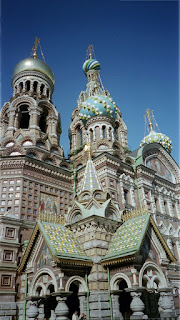After the great debate of
digital vs. film, the next that inevitably follows is SLR vs. point-and-shoot.
When considering which style of camera to purchase, you need to consider your photo habits. If the bulk of your pictures come from traveling, you want to think about both quick concealment and believable cover: sometimes you need to be able to excuse yourself for innocently wandering into that closed courtyard to get that shot, but most of the time, you want to blend in and avoid making yourself a target for muggers.
 |
| Metro arrival; Madrid, Spain |
Point-and-shoots can pack a lot of punch, if you do your research and are willing to shell out a little more money (but still hundreds less than even a basic SLR setup). I chose my camera for its combination of power and portability - for me, being able to toss my camera in my satchel, purse or pocket is much more important for the type of photography that I do. It also behooves me as a female traveler to avoid calling attention to myself. Smaller point-and-shoots also allow for more spontaneous shots, as the only preparation required is typically just the installation of the battery.
On the other hand, SLR cameras give you much more control over your focal length, aperture, and shutter speed. The interchangeable lens and flash packages also enhance your editorial options. With these options comes a loss of portability and increased prep time, though, but for studio work and purposeful projects, they can capture impeccable images. Telephoto lenses add an entirely new dimension to nature photography, especially because shooting a bumblebee is quite different from shooting just about any wild animal larger than a goose - when it comes to most wildlife, distance is not only your friend, it's your lifeline.
Of course, great pictures can be taken by basic - even disposable - cameras and even the most advanced camera can take horrible pictures in the hands of a user who hasn't learned to use it. The key to great pictures inevitably comes down to learning the ins and outs of your equipment. Weigh your options and whatever your choice, invest the time into learning to use the various features on your camera.







